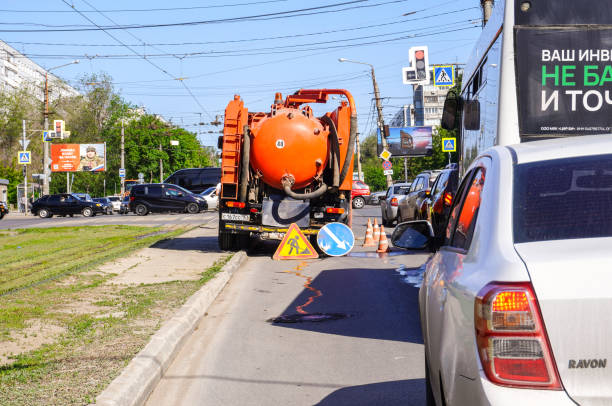Have you ever wondered how workers safely and efficiently perform underground utility work?
Vacuum excavation uses strong suction to remove soil and debris. This method protects existing underground structures and gives a clear view of what is below. Whether you’re a contractor or a curious homeowner, knowing about vacuum excavation can be helpful.
Read on to discover its benefits and uses in everyday projects!
Benefits of Vacuum Excavation
Vacuum excavation offers many benefits, making it a smart choice for various projects. First, it is safer than traditional digging methods.
The strong suction reduces the risk of hitting underground utilities, such as gas or water lines. This lowers the chances of accidents and costly repairs.
Second, vacuum excavation is faster. Workers can quickly remove dirt and debris, allowing them to immediately see what is below the ground.
Lastly, it creates less mess. The suction pulls everything into a truck, keeping the worksite clean and organized. These excavation benefits make it a very popular option.
Common Applications
Vacuum excavation is useful in many situations. One common application is during utility locating. Workers can safely find pipes, cables, or wires underground without damaging them.
It is also used for installing new utilities. The strong suction quickly removes dirt, making space for new installations.
Another important application is in environmental clean-ups. Vacuum excavation can help remove contaminated soil, making the area safe again.
Additionally, it’s great for pothole repairs. The method speeds up the repair process while keeping the work area clean.
Equipment Used
Vacuum excavation relies on specific equipment to function effectively. The main component is the vacuum truck, which has a powerful suction system. This truck collects soil and debris quickly and safely.
Another key part is the digging tool, often called an air lance. This tool uses compressed air to break up the soil before the vacuum pulls it away. Hoses connect the truck and the digging tool, allowing for easy movement during the job.
Operators also use safety gear, such as helmets and gloves, to stay protected while working. These help ensure that operations are efficient and safe.
Safety Considerations
Safety is very important when using vacuum excavation. Workers should wear proper safety gear.
This includes helmets, gloves, and high-visibility vests. These items help protect them from any dangers on the job site.
It is also essential to check the area before starting work. Workers should look for any underground utilities. This helps avoid accidents and damage.
Keeping the work area organized reduces the risk of tripping or falling. By taking these measures, workers can complete their tasks with less risk.
Cost Factors
The cost of vacuum excavation can vary based on several factors. One major factor is the size of the project. Larger jobs usually need more time and resources, which increases costs.
The location also matters; remote or hard-to-reach areas may raise expenses. Equipment rental and labor costs will add to the total.
Lastly, the level of site preparation needed can affect the final price. You can refer to the websites of manufacturers like Ring O Matic to know more about the costs.
You Can’t Go Wrong With Expert Vacuum Excavation
Vacuum excavation is a smart choice for digging safely and effectively. It helps protect underground pipes and cables while keeping the work area clean. Whether for big projects or small repairs, this method offers many benefits.
Understanding vacuum excavation can help you better choose your work or home projects. Remember, safety and efficiency are key when working underground!
Did you find this article helpful? Then check out our blog for more advice, tips, and insights!




